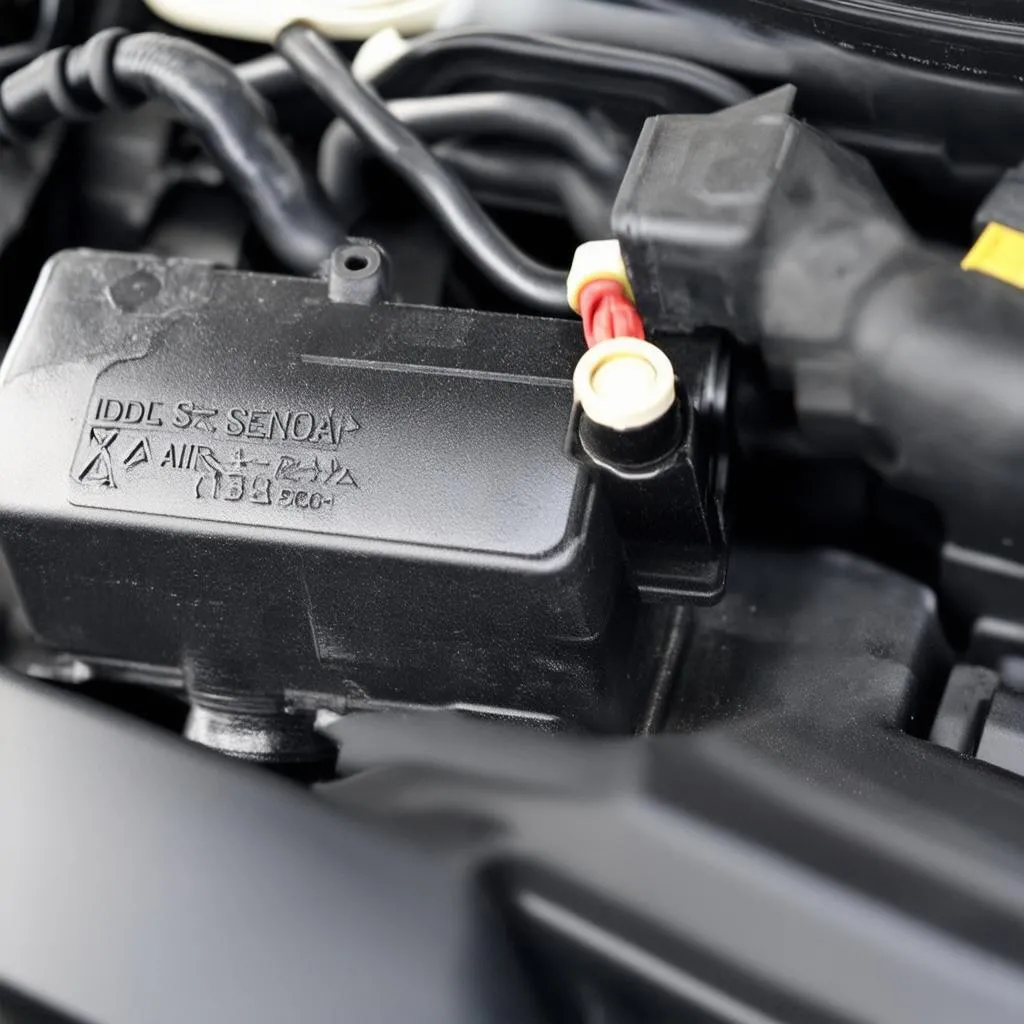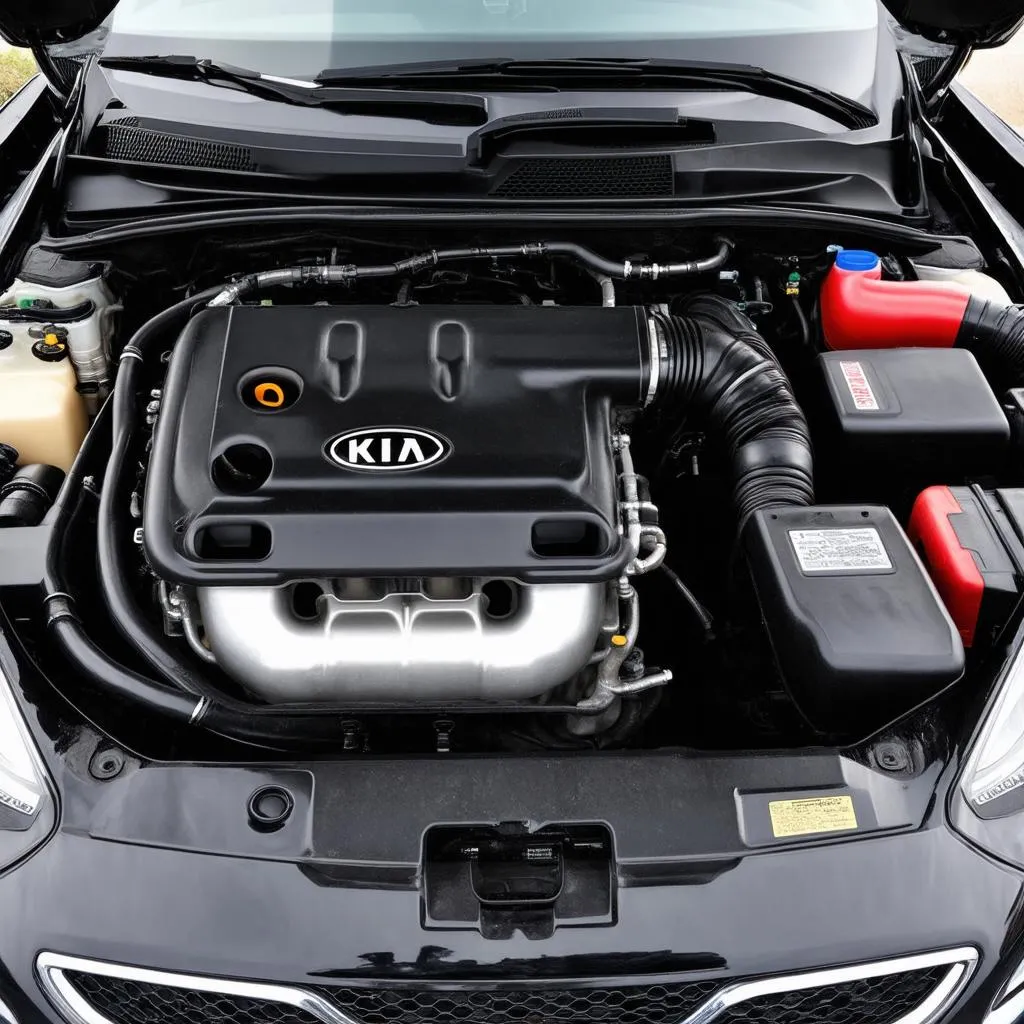“Why is my check engine light on?” It’s a question that has plagued Kia Sedona owners since, well, the invention of the check engine light. But when that little light is accompanied by the dreaded OBD code P0507, a wave of confusion often sets in.
Imagine this: You’re cruising down Highway 1 in your 2005 Kia Sedona, California sunshine warming your face, when suddenly, the check engine light pops on. A quick trip to your mechanic (or maybe you’re a DIY enthusiast with an OBD reader) reveals the culprit: code P0507. What does it mean? More importantly, what do you do about it?
This comprehensive guide dives deep into the mysterious world of the P0507 code, specifically for 2005 Kia Sedona models. Buckle up as we demystify this common issue and empower you to get back on the road with confidence.
Decoding the Kia Sedona P0507 Code
Before we jump into solutions, let’s understand what the “P0507” code actually signifies. In simple terms, it indicates an issue with your vehicle’s idle air control system, specifically a higher-than-normal idle speed.
Here’s what that means: Your engine is revving too high when it should be calmly idling.
What does this mean for you, the driver?
- Reduced fuel efficiency: An engine working harder at idle means it’s guzzling more gas, impacting your wallet and the environment.
- Potential damage to your engine: Continuously running at a high idle can lead to premature wear and tear on your engine components.
- Rough idling and stalling: A common symptom of a P0507 code is a rough or erratic idle, sometimes even leading to stalling at stoplights.
Causes and Solutions: Getting to the Root of the Problem
While the P0507 code points to an idle air control issue, several culprits could be responsible for this malfunction. Let’s explore the most common ones:
1. Faulty Idle Air Control Valve (IACV)
Think of the IACV as the gatekeeper of air entering your engine when it’s idling. A malfunctioning IACV can disrupt the delicate air-fuel balance, leading to that pesky P0507 code.
Solution: In most cases, replacing the IACV is the most effective solution. It’s recommended to purchase a high-quality replacement part from reputable brands like Bosch or Delphi.
 Kia Sedona IAC Valve
Kia Sedona IAC Valve
2. Vacuum Leaks
Remember those high school physics classes about air pressure? Well, your engine relies on a delicate balance of vacuum pressure for optimal performance. A leak in the vacuum hoses or intake manifold can disrupt this balance, causing the idle to surge.
Solution: Thoroughly inspect all vacuum lines connected to the intake manifold for cracks, looseness, or damage. Replace any suspect hoses and tighten clamps as needed.
 Kia Sedona Engine Bay
Kia Sedona Engine Bay
3. Dirty Throttle Body
Over time, carbon deposits and grime can accumulate in the throttle body, restricting airflow and confusing the idle air control system.
Solution: Cleaning the throttle body is a relatively straightforward process. A throttle body cleaner and a clean cloth are usually sufficient. However, if you’re uncomfortable working on your engine, it’s best to leave this task to a professional.
4. Faulty Throttle Position Sensor (TPS)
The TPS is like the eyes of your engine, informing the computer about the position of the throttle plate. A faulty TPS can send incorrect signals, leading to improper idle speed.
Solution: A faulty TPS usually requires replacement. Diagnosing a bad TPS might involve checking its voltage output with a multimeter.
Beyond the Basics: Expert Insights and Frequently Asked Questions
Dr. Emily Carter, automotive engineer and author of “The Complete Guide to Modern Car Repair,” emphasizes, “While these common culprits often trigger the P0507 code, it’s crucial to approach the issue systematically. Start with a visual inspection of vacuum lines and the IACV before moving on to more complex diagnostics.”
FAQs:
- Can I still drive my Kia Sedona with a P0507 code? While technically possible, driving with a high idle for extended periods is not recommended. It can lead to further engine damage and decreased fuel efficiency.
- Is fixing a P0507 code expensive? The cost of repair varies depending on the underlying cause. A simple throttle body cleaning might cost under $100, while replacing the IACV could range from $150 to $400, depending on labor costs in your area.
- Can I diagnose and fix the P0507 code myself? If you’re mechanically inclined and comfortable working on your vehicle, you can certainly attempt some basic troubleshooting. However, if you’re unsure, it’s always best to seek professional help.
Need Help? We’re Here for You!
Still feeling lost in the world of OBD codes and car repairs? Don’t worry; you’re not alone! Our team of automotive experts is here to help you navigate the confusing world of car diagnostics.
Contact us on Whatsapp at +84767531508 for personalized support and guidance. We offer a range of diagnostic tools and software to help you get to the bottom of your car troubles. Let us help you get back on the road safely and confidently!